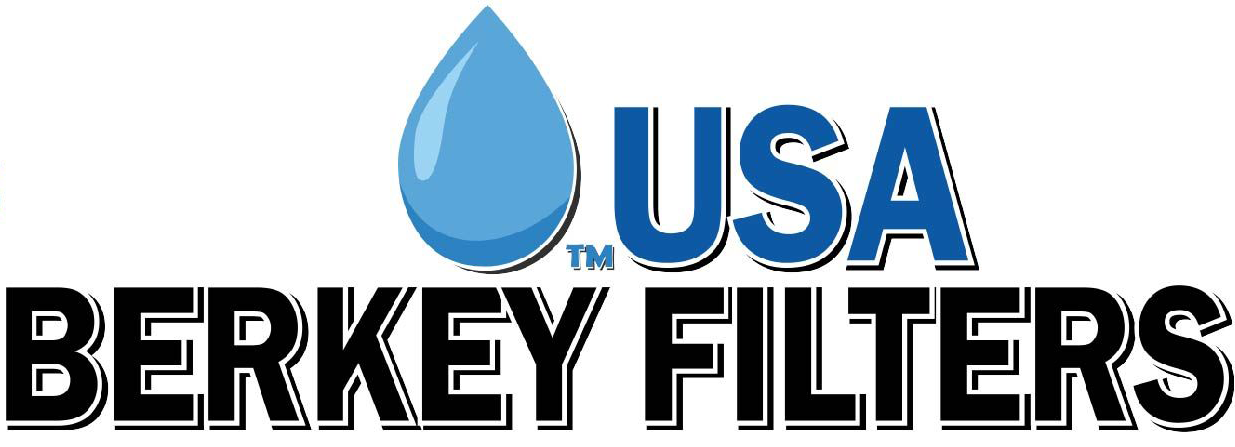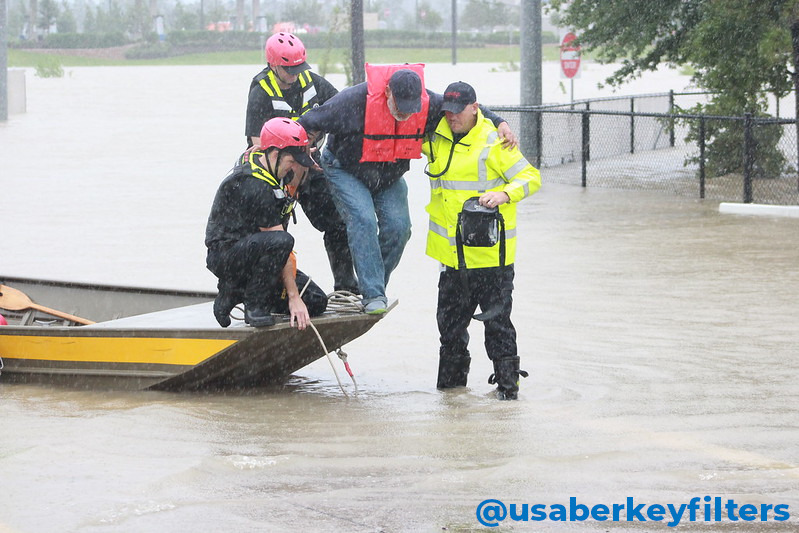Four years ago last month, I witnessed a swift water rescue team rescue an elderly man who was stranded in a Target parking lot during Hurricane Harvey.
During the first break in that never-ending storm, I hopped into my truck to survey the damage, first around my immediate neighborhood and then down the major roads. Because law enforcement and city officials were instructing everyone to stay inside their homes and off the roads, I was able to travel freely and observe.
Having previously worked professionally in EMS, I had gear with me to render aid if needed, but my purpose was to evaluate the aftermath and take notes. Since Harvey was my first hurricane and major flood experience, I was grateful that my family and residence were spared any inconvenience. We didn’t lose power or internet. And because of that, we were able to do what we all do after floods and hurricanes: muck-out & gutting parties!
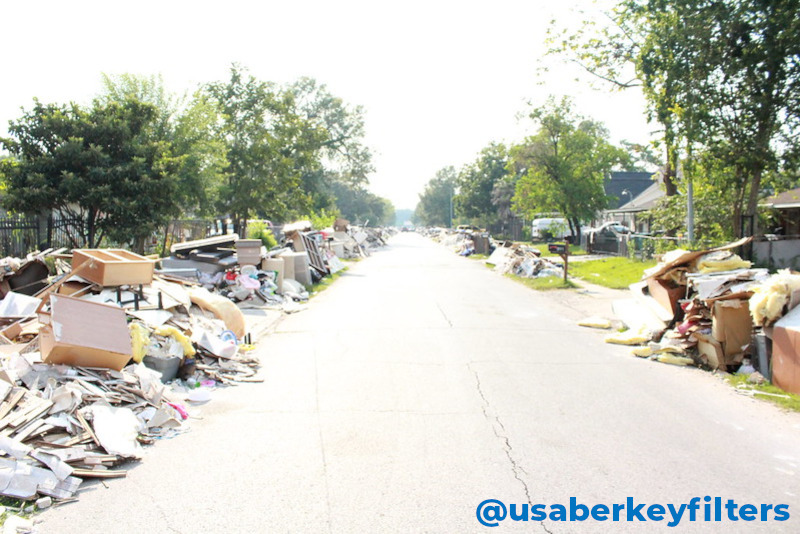
Because Houston’s drainage routes are primarily bayous, with heavy water fall things return back-to-normal within an hour or two once the water stops. After the waters recede, traffic pretty much resumes as usual, unless debris needs to be cleared by private contractors or public works. When that happens, you either need to know alternate routes to get where you’re going, or you wait it out.
As I drove over a bridge that spans our nearest major highway, I could see a few hundred yards ahead of me that I would not be able drive any further…
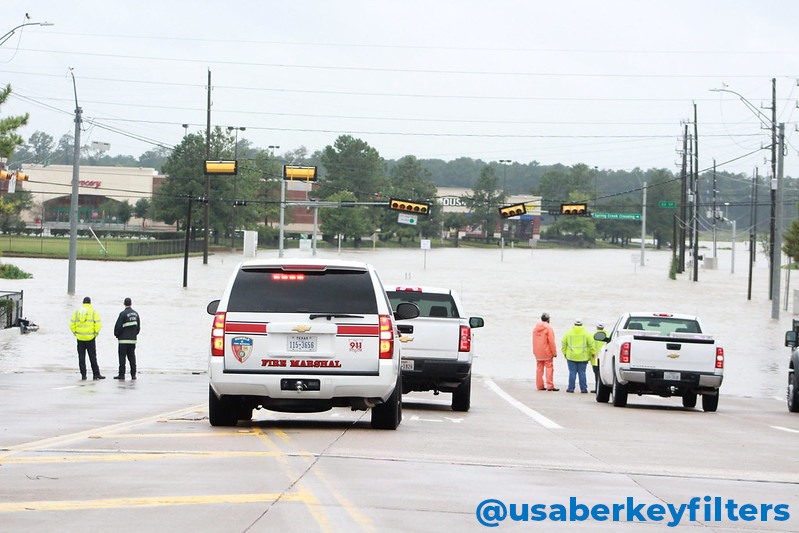
The irony, though, was that the intersection which you see in the photo above had been cordoned-off the day before I took this shot. There were traffic barriers with “DO NOT ENTER” high-visibility tape strung across. In other words, there was no way you could drive through without IGNORING the warnings of danger.
In the above image, though you can see several men standing near the shoreline, you are not able to see the man stranded in the parking lot in the left of the image. Luckily, I had my long lens with me so I could show you…
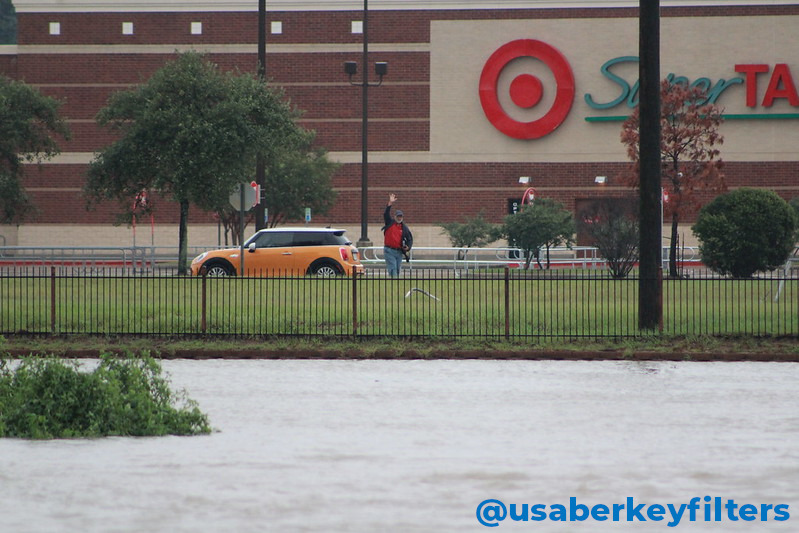
Yes, that is our rescue victim. Stranded because…well, “Bless his heart!”
After calling 9-1-1 and providing dispatch with his precise location (all plaza entrances & exits were surrounded by several feet of moving water), first responders arrived on-scene. He hung up with dispatch, grabbed his jacket and his satchel, locked the car, and then tapped the alarm fob to confirm it was locked.
By this time, our local OEM (Office of Emergency Management) had dispatched their Swift Water Rescue Team to the location and they were arriving. The rain decided to return.
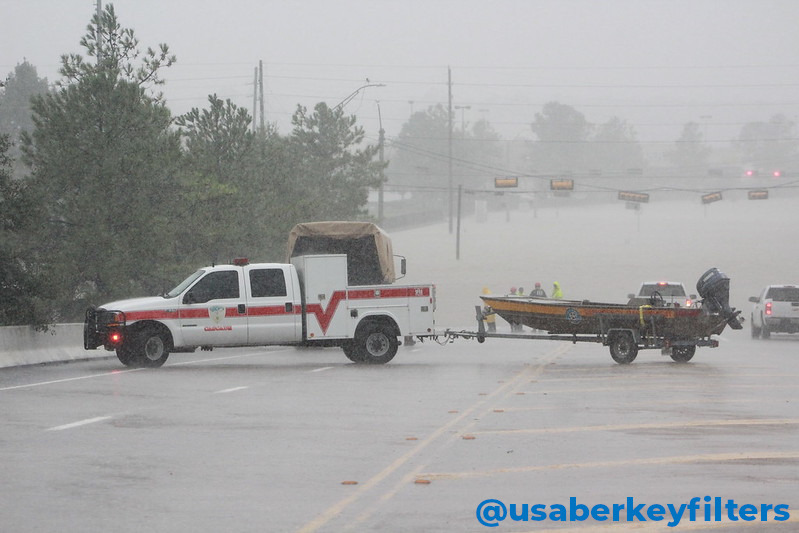
They positioned their trailer near the shoreline…
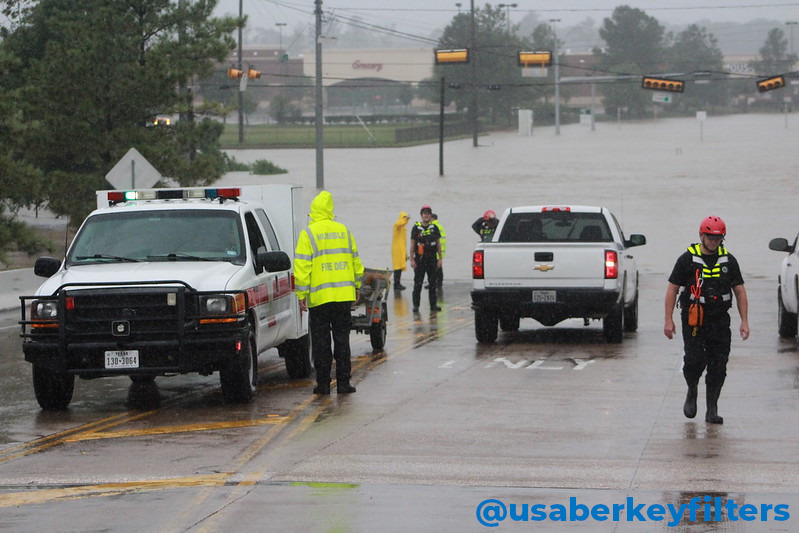
They back the trailer into the water in preps for launch…
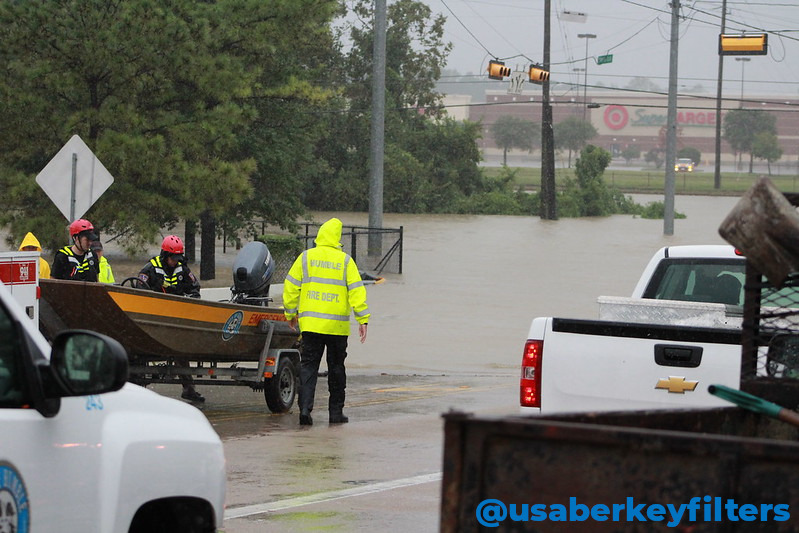
They work to ensure smooth release…
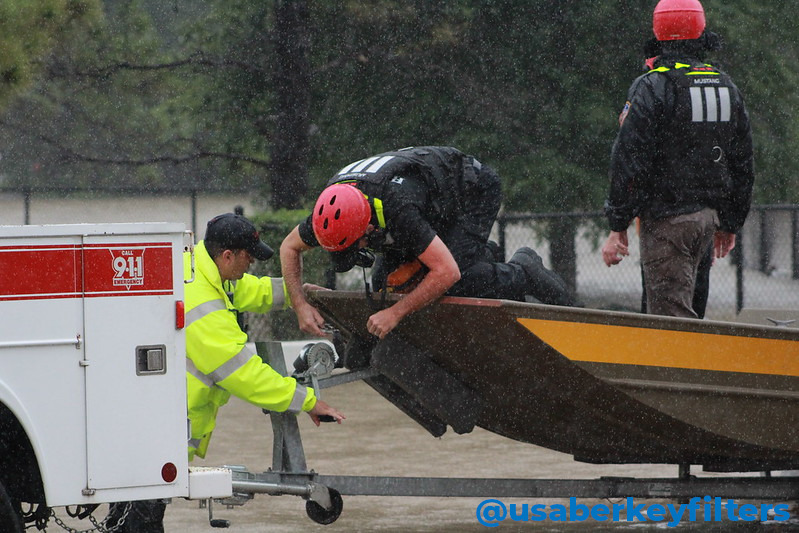
Because they are in relatively shallow water, they must manually push-out in order to avoid damaging the outboard motor’s lower unit (gearbox, propeller, skeg).
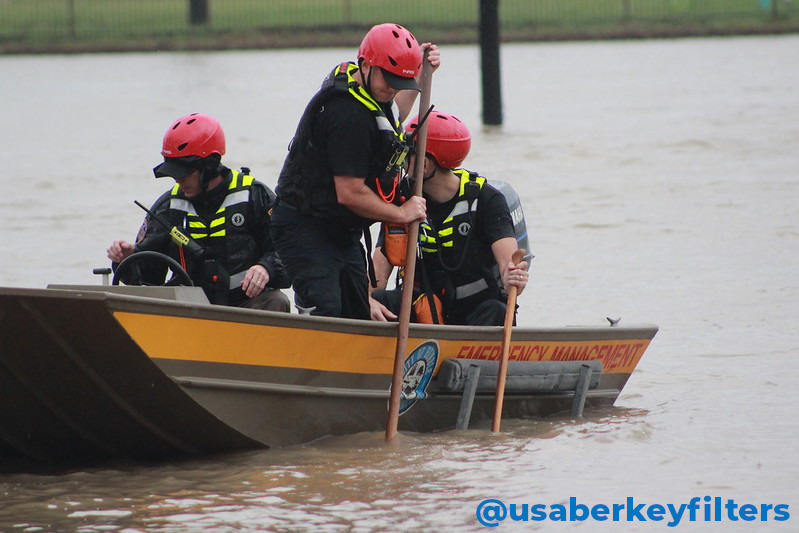
Having sufficiently pushed-out and tested the water depth (and for debris), they are under way…
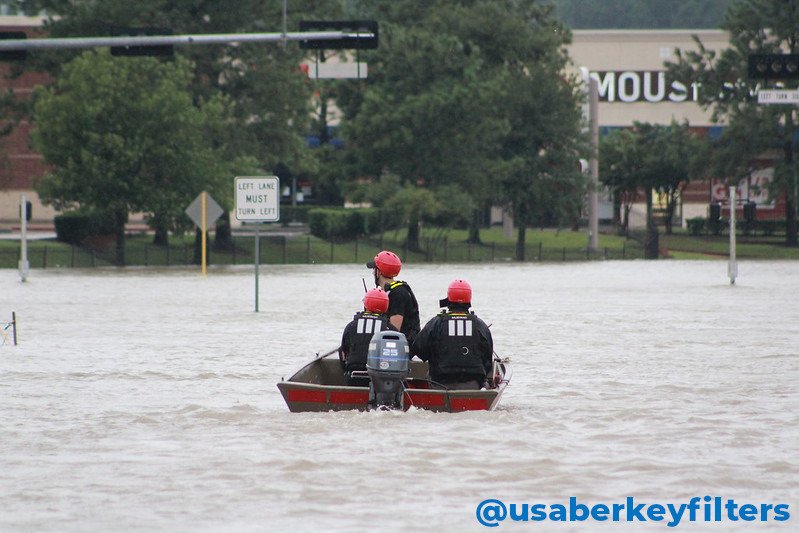
After navigating carefully to avoid debris and other unknowns, they eventually reach him and secure a PFD (personal flotation device) onto him…
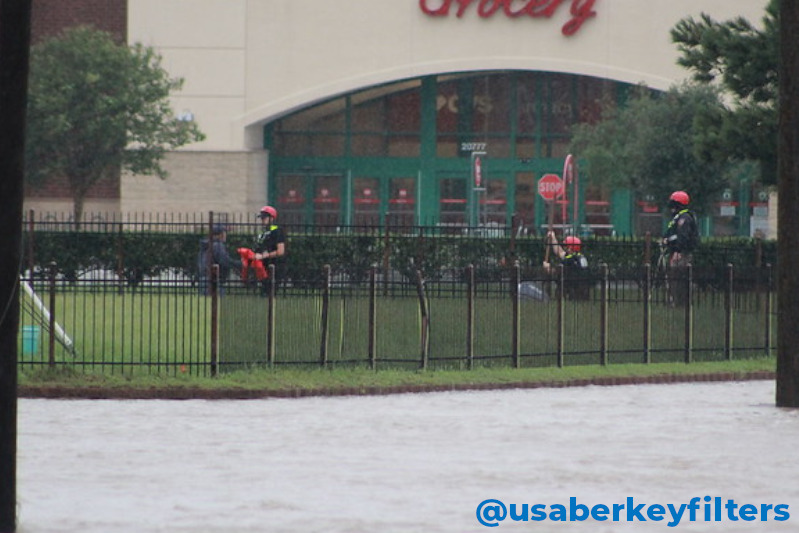
As soon as secure, he is loaded onto the boat and the crew pushes-out again…
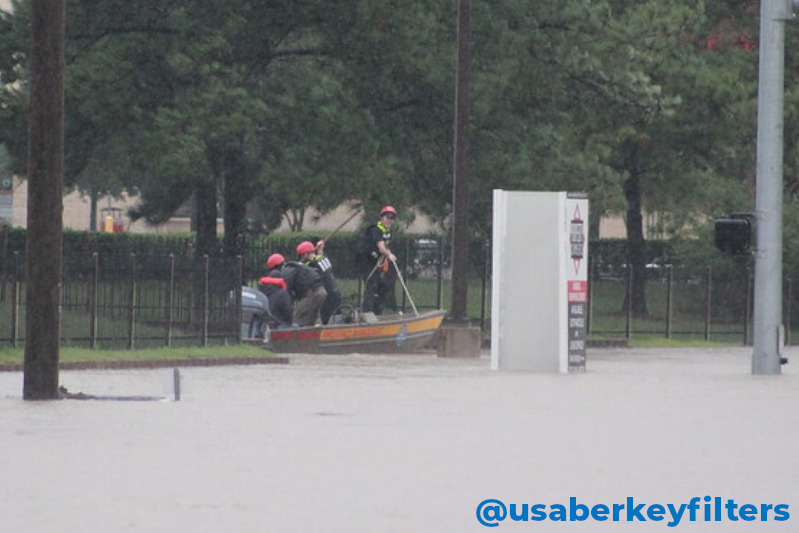
As they cautiously make their way back, the rescued man is clearly relieved and appears to have learned his lesson…
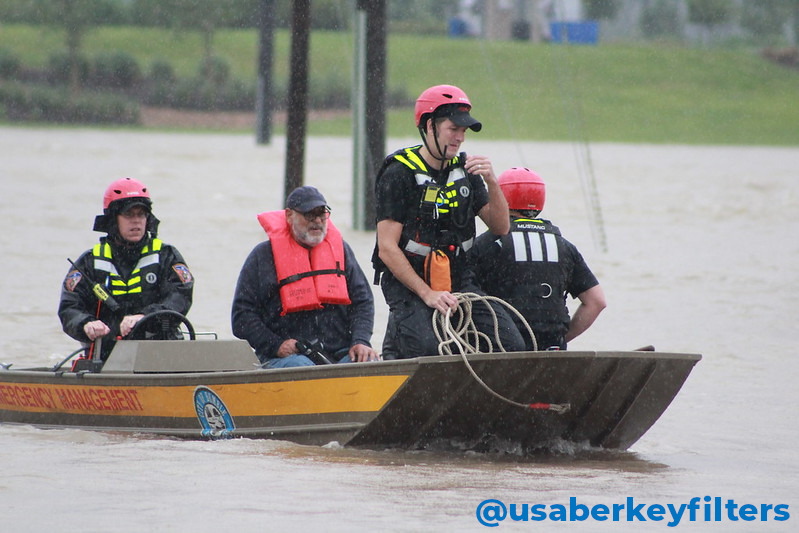
As they near the drop-off point, he is helped off the rescue boat…
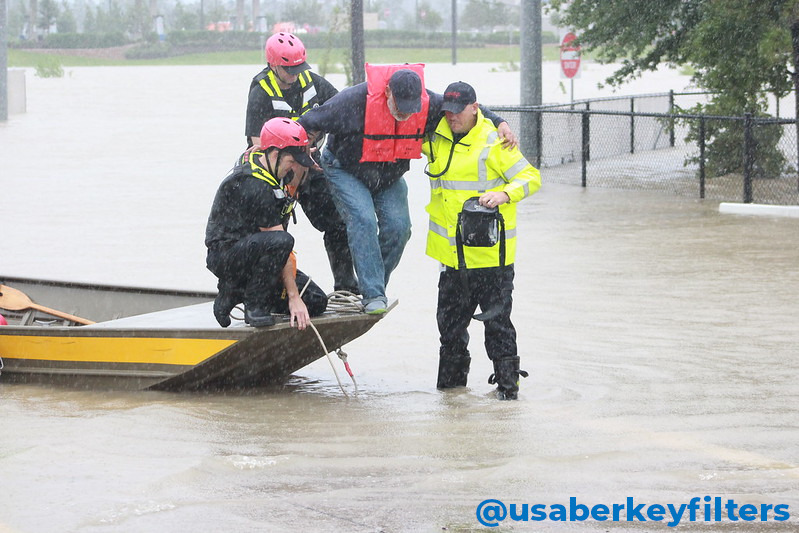
He is clearly appreciative and had no problem expressing his gratitude with a hug…

Below is a comparison of that intersection from then and now…

There were many, many important take-aways afforded me during Harvey that year. And, there have been many more lessons learned with additional storms and freezes.
With regard to this gentleman’s rescue, it would not have been necessary had he avoided driving into this area as the rains were coming down AND as water was spilling over the banks of the adjacent river. His vehicle would not have stood a chance, even in water less than one foot in depth.
Every major storm season where downtown Houston is flooded, there are at least two or three tragic deaths because people attempt to drive through floodwater. Sadly, those deaths were not necessary.
If you have an emergency experience that you’ve documented with photos, feel free to share your story with us and we can post it here for the benefit of all who want to learn.
Wherever you are and whatever you do, stay safe.
